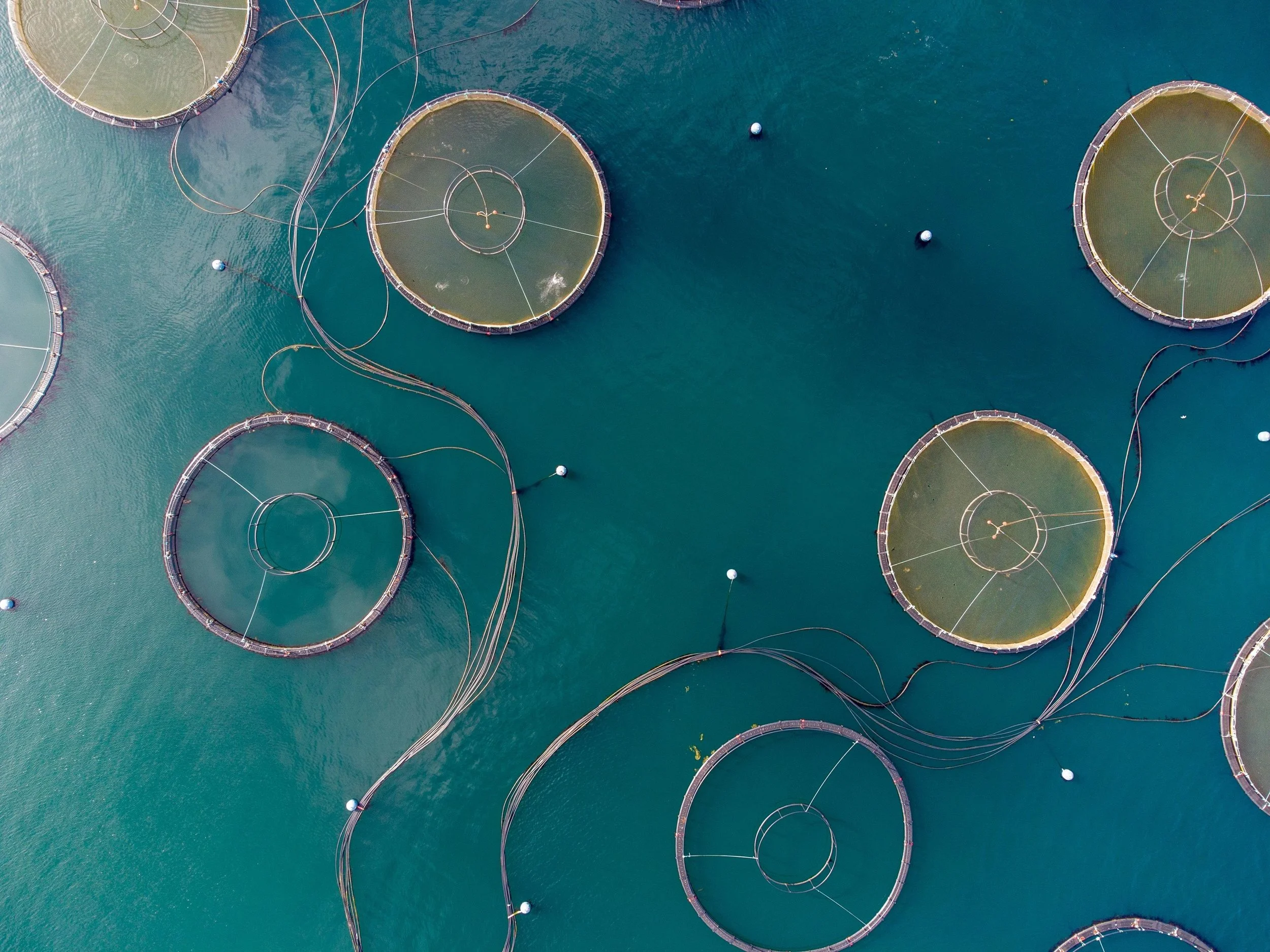May 16, 2023
A Dive into Aquaculture: The Future of Sustainable Seafood
Written by: Niko Simos
May 16, 2023
Aquaculture, the practice of fish farming, is a recently growing industry that relies on cultivating aquatic flora and fauna specifically for human consumption. With rapid population increases around the world, the demand for fish and seafood is similarly increasing, making aquaculture an highly important source of food. Unlike wild fishing, which can deplete natural fish populations and damage ecosystems, aquaculture offers a sustainable and controlled way to produce aquatic protein sources.

Pacific Reef Fisheries uses pond culture in Australia. Credit: Andrew Rankin for Evoke Ag.
There are a multitude of species that can be cultivated through aquaculture, each with varying market benefits. These include, but are not limited to,
Fish - The most common type of organism grown in aquaculture, fish includes varieties of salmon, trout, tilapia, catfish, carp, and barramundi.
Crustaceans - This includes shrimp, prawns, lobsters, and crayfish. The global crustaceans market size was valued at $16.4 billion USD in 2021, and is projected to reach $25.3 billion by 2031, growing at a compound annual growth rate (CAGR) of 4.5% from 2022 to 2031.
Mollusks - Oysters, clams, mussels, and scallops can be grown in aquaculture for their meat and pearls. In 2021, the global mollusk market size was valued at 60.72 billion and is projected to expand at a CAGR of 4.5% from 2022 to 2028.
Seaweeds - Nori, kelp, and wakame are grown in aquaculture for use in numerous food products such as sushi, miso soup, and salad dressings. The global seaweed market was valued at $6.5 billion in 2021, and is projected to reach $14.6 billion by 2031, growing at a CAGR of 8.7% from 2022 to 2031.
Caviar - Caviar is a luxury food item made from the eggs of sturgeon, which are grown in aquaculture. The market will reach 0.60 billion by 2030 at a 7.63% CAGR.
Algae - Certain species of algae, such as spirulina, are grown in aquaculture for use in dietary supplements and other health products. The global algae market was valued at 20.94 Billion in the 2022 and is forecast to reach a value of 45.55 billion by 2030. According to FAO, global cultivation of algae, dominated by marine seaweeds, grew by half a million tonnes in 2020, up 1.4 percent from 34.6 million tonnes in 2019.
Utilizing aquaculture can range across lower to higher tech methods. These include:

Sea Cage Culture. Credit: The Healthy Fish
Pond Culture - Pond culture is the most traditional method of fish farming and involves raising fish in ponds or small bodies of water. The ponds are typically constructed by excavating a depression in the ground, lining it with a plastic or clay liner, and then filling it with water. The fish are then stocked into the pond, with their growth monitored over time. Pond culture is a low-cost method of aquaculture and is well suited to species such as catfish and tilapia.
Cage Culture - Cage culture involves raising fish in net pens or cages that are submerged in bodies of water such as lakes, rivers, or the ocean. The cages are typically made of mesh or other materials that allow water to flow freely through them, and they are secured to the bottom of the water body to prevent them from drifting away. Cage culture is a popular method of aquaculture for species such as salmon and trout.
Recirculating Aquaculture Systems (RAS) - RAS involve raising fish in tanks or other closed systems where water is continuously recirculated and treated to maintain high water quality. RAS systems can be used to grow a wide range of species, including shrimp, tilapia, and barramundi. RAS is a highly efficient method of aquaculture as it uses less water and produces less waste than traditional methods.

A Recirculating Aquaculture System. Credit: AquaBioTech. For Undercurrent News.
Integrated Multi-Trophic Aquaculture (IMTA) - IMTA involves growing multiple species in the same system to create a more sustainable and efficient aquaculture operation. For example, shellfish such as mussels and oysters can be grown in conjunction with fish such as salmon or trout. The shellfish help to filter the water, removing excess nutrients and waste produced by the fish, which improves water quality and reduces the risk of disease.
Flow-Through Systems - Flow-through systems involve pumping water from a water source, such as a river or lake, into a series of tanks or ponds where fish are raised. The water is then discharged back into the water source, typically after treatment to remove excess nutrients and waste. Flow-through systems are commonly used to grow trout and salmon, but they can also be used to grow other species such as catfish and tilapia.
As factors such as climate change, overfishing, and pollution, among many others, impact aquatic ecosystems across the planet, aquaculture can serve as a productive alternative solution if implemented in a thoughtful, sustainable manner.

